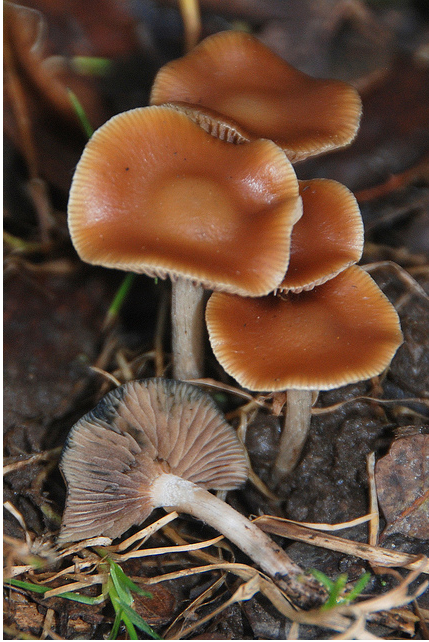Nutrition
Psilocybe cyanescens is a heterotroph, which simply put
means that it does not generate its own energy from sunlight,
but rather consumes other organisms in order to fulfill its
nutritional requirements. Because it is unable to synthesize its
own organic compounds, it must get its energy from an external
source. Therefore the aspect of "Hetero" means other, and "troph"
refers to feeding, therefore the definition of heterotroph
determines that the organism feeds on other organisms. This is
also common in the kingdom anamalia, as they consume other
organisms to fulfill their nutritional requirements as well.
The methods of consumption that fungi use to
fulfill their nutritional

requirements is solely unique to the kingdom Fungi, which is
utterly fascinating! The mushroom secretes a digestive enzyme on the
organic substrate that it is growing on, which completely digests it. Then, after the organic material is digested, the
fungus consumes it. So, to simply reiderate the material just discussed, the
mushroom release an enzyme, and then consumes the material that it
has previously digested to fulfill its nutritional requirements.
In respect to their genetic makeup, fungi
follow the same feeding pattern as animals do, which is the opposite
of plants. P Cyanescens
consumes oxygen, and releases carbon dioxide into the external
environment as a byproduct of cellular respiration. While plants
take in carbon dioxide and sunlight, with the byproduct oxygen is
released in response fungi do the exact opposite. Once the
nutritional requirements have been fulfilled, the mushroom is able
to produce a network of mycelium, which when presented adequate
growing conditions will prosper into fruiting bodies and become a
full-fledged mushroom in turn.
P. Cyanescens, Dec 11, 2010
Click on the corresponding link to see the
entire life cycle of P.
cyanescens in greater detail, in order to be able to fully
comprehend the nutritional balance between mycelium and fruiting
body!
